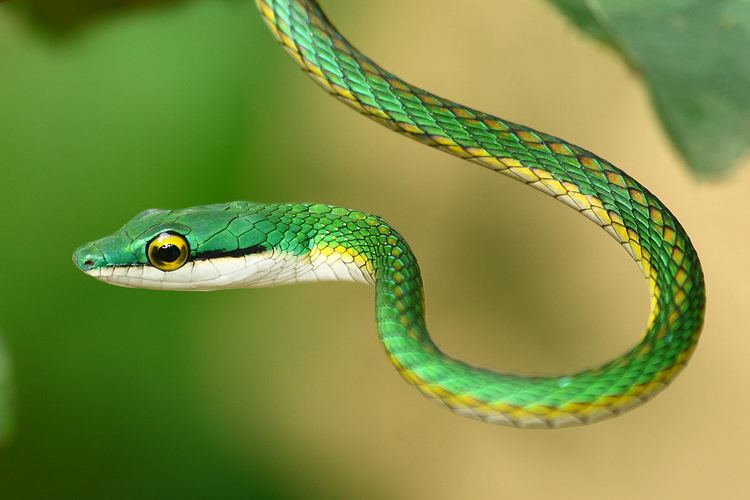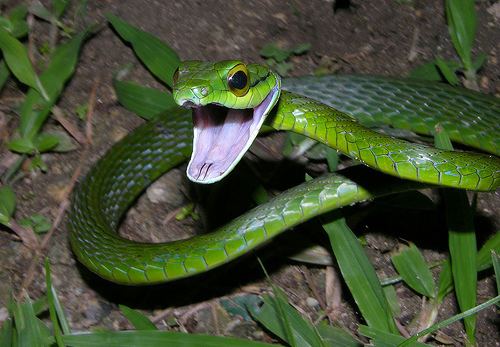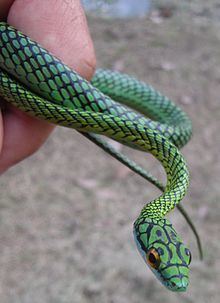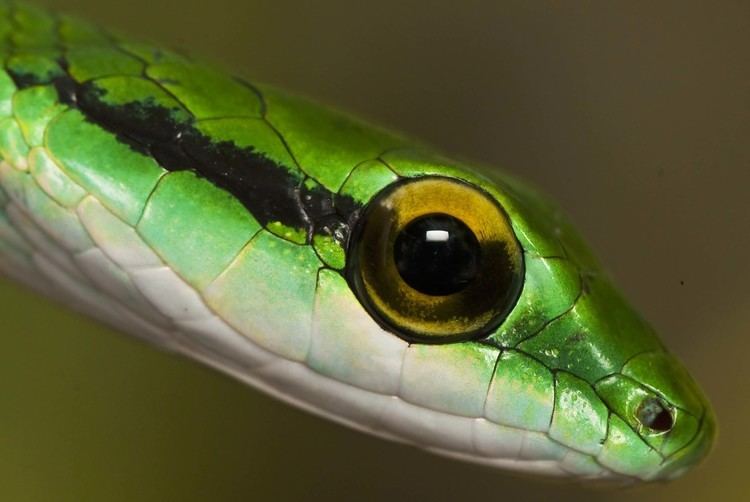Suborder Serpentes Subfamily Colubrinae Higher classification Leptophis Order Scaled reptiles | Subphylum Vertebrata Genus Leptophis Phylum Chordata Rank Species | |
 | ||
Similar Leptophis, Scaled reptiles, Imantodes, Smooth green snake, Ahaetulla | ||
Parrot snake lora leptophis ahaetulla
Leptophis ahaetulla, commonly known as the lora or parrot snake, is a species of medium-sized slender snake of the Colubridae family. It is endemic to Central America and northern South America.
Contents
- Parrot snake lora leptophis ahaetulla
- Bejuquillo verde leptophis ahaetulla
- Distribution
- Description
- Subspecies
- Diet
- References

Bejuquillo verde leptophis ahaetulla
Distribution

Description
Adults may attain a total length of 172 cm (68 in), which includes a tail 59 cm (23 in) long.

Dorsally, Leptophis ahaetulla is bright green, golden, or bronzy. The keels of the dorsal scales are black or dark brown. The head shields and the dorsal scales may be edged with black. On each side of the head is a black streak which passes through the eye. The upper lip and the belly are white or yellow. The species was thought to be non-venomous, but is mildly venomous, with localized pain, swelling and 'pins and needles' being the symptoms of envenomation. Symptoms disappear after a few hours, with no real harm being caused.

The head is elongated and distinct from the neck. The eye is large with a round pupil. The body is slender, and the tail is long.
The dorsal scales are arranged in 15 rows at midbody, and are strongly keeled except in the first row on each side (the row adjacent to the ventrals), where they are smooth. They are also smooth on the neck and tail.
Ventrals 151-167, strongly angulate at the sides; anal plate divided; subcaudals 140-173, divided.
The loreal scale is absent, and the prefrontals extend through the loreal region to contact the upper labials. There are usually 2 postoculars, and the temporals are 1 + 2. There are 8-9 upper labials, of which the 4th & 5th (or 5th & 6th) enter the eye. The anterior chin shields are shorter than the posterior chin shields.
Subspecies
Leptophis ahaetulla has currently 12 recognized subspecies, including the nominotypical subspecies:
